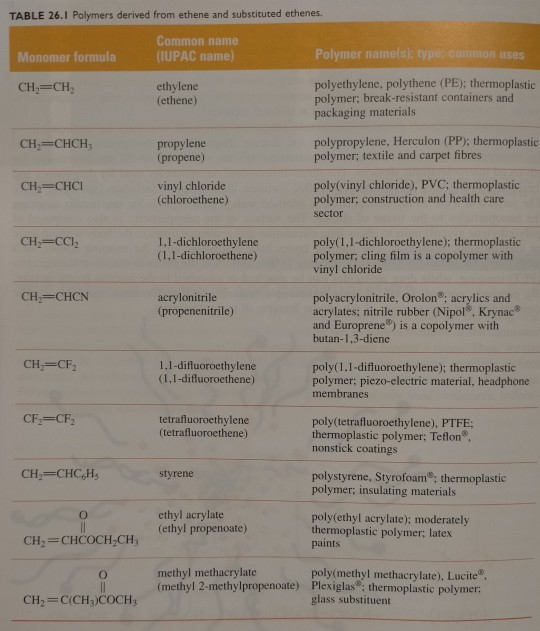#Styrene
Explore tagged Tumblr posts
Text

Plastic. Eyes of the air! Ad for Dow Chemical Company’s plastics - 1943.
#vintage advertising#chemistry#plastic#plastics#dow chemical company#dow chemical#dow#vintage aircraft#military aircraft#ww2 aircraft#wwii#ww2#saran#ethocel#styron#poly styrene#styrene#vintage illustration
10 notes
·
View notes
Text

Novel chemical recycling system for vinyl polymers of cyclic styrene derivatives
Chemical recycling of widely used vinyl polymers (VPs) is one of the key technologies required for realizing a sustainable society. In this regard, a team of researchers from Shinshu University have recently reported a new chemical process that facilitates the depolymerization of cyclic styrene-based VPs, resulting in the recovery of a monomer precursor. This highly efficient chemical recycling system can help with effective resource circulation and the development of new plastic recycling technologies. Vinyl polymers (VPs) are one of the most widely used plastic materials. They are found everywhere, from poly(vinyl chloride) pipes and surgical gloves to disposable polystyrene plates. Given the global call for a move towards sustainability, would it not be great to chemically recycle this widely used polymer for realizing a sustainable society?
Read more.
16 notes
·
View notes
Text
Table 26.1 gives some examples of polymers formed from compounds related to ethene, along with their common names and most important uses.

"Chemistry" 2e - Blackman, A., Bottle, S., Schmid, S., Mocerino, M., Wille, U.
#book quotes#chemistry#nonfiction#textbook#polymers#ethene#ethylene#propene#propylene#chloroethene#vinyl chloride#dichloroethene#dichloroethylene#propenenitrile#acrylonitrile#difluoroethene#difluoroethylene#tetrafluoroethene#tetrafluoroethylene#styrene#ethyl propenoate#ethyl acrylate#methyl methylpropenoate#methyl methacrylate
2 notes
·
View notes
Text

Dorothy Kneale, are you still out there?! You still groovin’ to this psychedelic soul, or are ya knitting a sweater?
2 notes
·
View notes
Text

2 notes
·
View notes
Text
Now complete constructions with confidence!
Meet Styrene’s Polystyrene Sheets! Lightweight, durable, and versatile, they ensure seamless installation and superior insulation.
Choose Styrene’s Polystyrene Sheets today
#Styrene#styrofoam#polystyrene#manufacturingindustry#lightweight#safe#ecofriendly#environment#recyclable#recycling#sheets#abudhabi#uae
3 notes
·
View notes
Text
ABS plastic: a comprehensive analysis from raw materials to products
In the rapidly developing modern industry, the selection and application of materials are directly related to the performance, cost and sustainability of products. ABS plastic, as a thermoplastic widely used in many fields, has become the preferred material in many industries due to its unique chemical structure and superior physical properties. This article will take you to an in-depth…
#ABS plastics#acrylonitrile#automobile manufacturing#butadiene#construction field#corrosion resistance#daily life#easy processing#Electrical Insulation#electronics and electrical appliances#high strength#polymerization#styrene#thermal stability#toughness
0 notes
Text
Styrene Prices | Pricing | Trend | News | Database | Chart | Forecast
Styrene prices have shown considerable volatility over recent years, driven by a variety of factors including raw material costs, global supply and demand dynamics, geopolitical events, and shifts in environmental regulations. The styrene market is inherently tied to its feedstocks, primarily benzene and ethylene, which are themselves subject to price fluctuations based on crude oil prices. As a result, any change in the oil markets typically has a direct impact on styrene prices, making it a key driver in this sector.
Demand for styrene is largely driven by its use in the production of various polymers, such as polystyrene, acrylonitrile butadiene styrene (ABS), and styrene-acrylonitrile (SAN). These materials are essential in a wide range of industries including automotive, electronics, packaging, and construction, contributing to the widespread demand for styrene. In particular, the automotive and construction industries account for a large portion of global styrene consumption, which means that economic trends in these sectors also affect prices. For instance, when there is a slowdown in automotive production or construction activities, demand for styrene-based products tends to drop, putting downward pressure on prices. Conversely, during periods of economic growth and industrial expansion, demand rises, often leading to price hikes.
Get Real Time Prices for Styrene: https://www.chemanalyst.com/Pricing-data/styrene-38
Another significant factor influencing styrene prices is environmental regulation. As governments around the world tighten regulations surrounding the production and use of chemicals like styrene, producers are faced with higher costs associated with compliance. This includes investments in cleaner technologies, improved safety standards, and measures to reduce emissions. In regions like Europe, where stringent environmental policies are in place, the cost of producing styrene can be significantly higher compared to other regions with less restrictive policies. This variation in production costs across different geographical locations can lead to price disparities in the global market, as producers in regulated markets may pass on these costs to consumers, resulting in higher prices.
Geopolitical tensions also play a role in the fluctuations of styrene prices. Trade restrictions, tariffs, and sanctions can disrupt the flow of raw materials or finished products, leading to supply shortages or surpluses that affect market pricing. For instance, when trade wars or sanctions disrupt the supply of benzene or ethylene, styrene producers may face challenges in sourcing their raw materials, which could lead to a reduction in production and higher prices due to scarcity. Similarly, tensions in major oil-producing regions can lead to uncertainty in crude oil supply, indirectly influencing the costs of benzene and ethylene, thereby impacting styrene prices.
In addition to these external factors, the styrene market is also influenced by seasonal trends and cyclical patterns in production and consumption. For example, demand for styrene-based products tends to increase during warmer months when construction activities are typically at their peak, driving up prices. Conversely, during colder months when construction slows down, demand for styrene may decrease, leading to a drop in prices. These seasonal trends are an important consideration for both producers and consumers in managing their inventories and anticipating price movements.
Looking at regional trends, the Asia-Pacific region remains the largest market for styrene, driven by rapid industrialization and the booming manufacturing sector in countries like China and India. These countries are major consumers of styrene-based products, particularly in the packaging, automotive, and electronics industries. As a result, styrene prices in the Asia-Pacific region are often higher compared to other regions due to strong demand. However, this region is also home to some of the world's largest styrene production facilities, which helps to balance out the supply-demand dynamics to some extent. In contrast, North America and Europe have seen relatively stable demand for styrene, although changes in environmental regulations and trade policies in these regions continue to impact prices.
The future of styrene prices is likely to be shaped by a combination of technological advancements, sustainability initiatives, and shifts in consumer preferences. As the global focus on sustainability intensifies, there is increasing pressure on industries to reduce their reliance on petrochemicals and move towards more sustainable alternatives. This could potentially lead to a decrease in demand for styrene and styrene-based products, thereby affecting prices. At the same time, technological advancements in the production of styrene and its derivatives could lead to cost efficiencies, which may help to stabilize prices in the long term.
In conclusion, styrene prices are influenced by a complex interplay of factors, including raw material costs, supply chain dynamics, environmental regulations, geopolitical tensions, and regional demand variations. While the market is expected to remain volatile in the short term, ongoing developments in technology and sustainability could potentially lead to more stable pricing in the future. However, until these developments fully materialize, producers and consumers alike will need to navigate the inherent uncertainties of the styrene market, with a keen eye on the various economic, political, and environmental factors that continue to shape it.
Get Real Time Prices for Styrene: https://www.chemanalyst.com/Pricing-data/styrene-38
Contact Us:
ChemAnalyst
GmbH - S-01, 2.floor, Subbelrather Straße,
15a Cologne, 50823, Germany
Call: +49-221-6505-8833
Email: [email protected]
Website: https://www.chemanalyst.com
#Styrene#Styrene Price#Styrene Prices#Styrene Pricing#Styrene News#Styrene Price Monitor#Styrene Database#Styrene Price Chart
0 notes
Text
Our research showed engineered stone’s metal components may also be hazardous to lung health. In particular, cobalt and aluminium have been associated with lung inflammation.
Unlike natural stone, engineered stone emissions contained up to 20 per cent resin, and during cutting and grinding there is the potential for resin to break down and generate harmful chemicals such as styrene.
This potential for co-exposure to various hazards has significant implications for new stone alternatives emerging on the market – particularly reduced-silica or silica-free stones. There are a lot of unknowns about the safety of these products.
0 notes
Text
#styrene#scalemodel#scale#scratchbuild#vr#scratchbuilt#scalemodels#modelmaking#scratchbuilding#plasticmodel#ethylene#polystyrene#styrenejunkie#styrenemonomer#propyleneglycol#coroplast#volkswagenmk#miniatures#turbo#modelbuilding#mk#revell#golf#glycolpeople#ethyleneglycol#printshop#chemicalindustry#plasticmodels#indianchemicalindustry#styrenemonomerplant
0 notes
Text

Poly Styrene performing with X Ray Spex
Photo by Kevin Cummins
1K notes
·
View notes
Text
The concept is based on the reversible addition of radicals to carbon-sulfur double bonds in thiocarbonyl thio transfer reagents (R-S(C=S)Z (figure 26.26).

"Chemistry" 2e - Blackman, A., Bottle, S., Schmid, S., Mocerino, M., Wille, U.
#book quotes#chemistry#nonfiction#textbook#chemical reactions#raft#reversible addition fragmentation chain transfer#polymerization#xanthate#styrene#polymers
0 notes
Text




Chrissie Hynde of The Pretenders, Debbie Harry of Blondie, Viv Albertine of The Slits, Poly Styrene of X-Ray Spex, Siouxsie Sioux of Siouxsie And The Banshees and Pauline Black of The Selecter in London, 1980.
#aesthetic#dark aesthetic#goth#goth aesthetic#chrissie hynde#the pretenders#debbie harry#blondie#viv albertine#the slits#poly styrene#x ray spex#siouxsie sioux#siouxsie and the banshees#pauline black#the selecter#80s#1980
3K notes
·
View notes
Photo

Now worry not about your construction cause polystyrene sheets will handle them with ease. Place your order for polystyrene sheets right away to find out for yourself why they are the best option for your upcoming project! Call Us ☎+971 2 5511166WhatsApp 📲 052 10 20 30 0Website 🌐www.styrene-uae.com
#Styrene#styrofoam#polystyrene#manufacturingindustry#ecofriendly#environment#recyclable#recycling#sheets#abudhabi#uae
2 notes
·
View notes
Text

Poly Styrene, July 3, 1957 – April 25, 2011.
1978 photo by Pennie Smith.
270 notes
·
View notes
